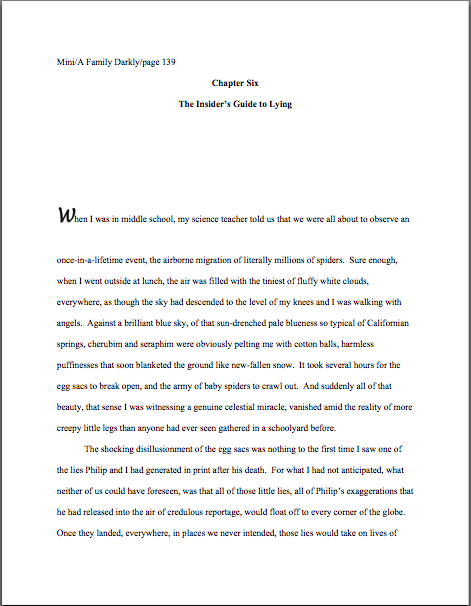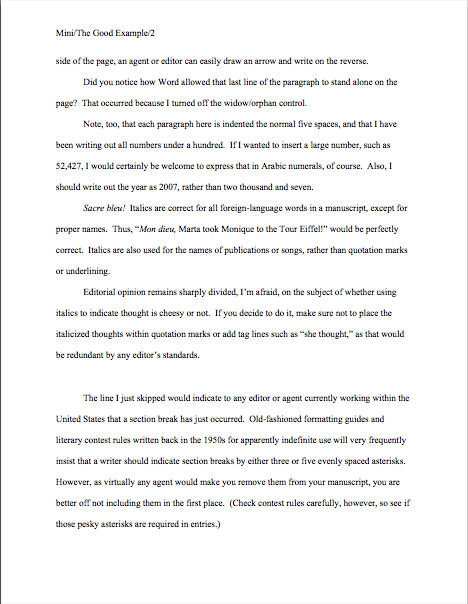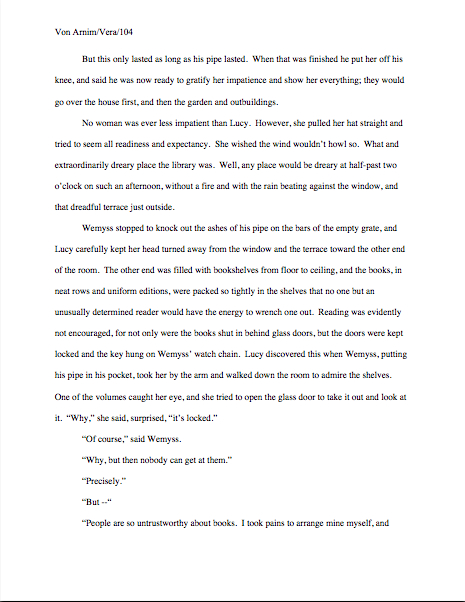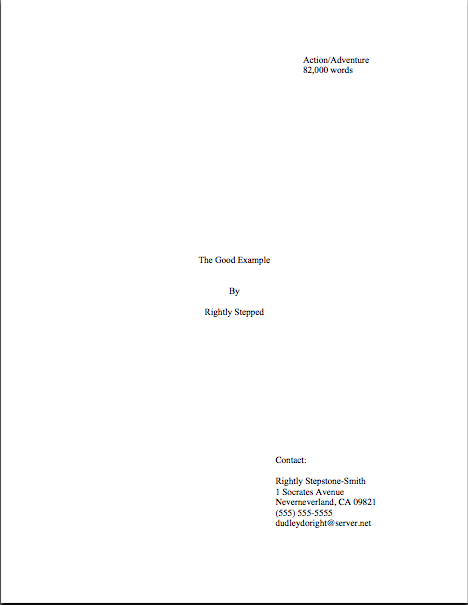Hello, campers –
Every so often, I like to make a quick tour of blogs that have linked to mine, just to see if we here at Author! Author! have sparked interesting discussions or raised new questions elsewhere. I’ve gotten many ideas for new posts this way. Today, I was doing a spot of surfing and came upon a very engaging manuscript-reviser’s cri de coeur at Thoughts in Yellowwood Forest, appropriately entitled “arrgggrrrrggggggggggggggggggggggggggggg.” In it, the author mentioned having applied some archived advice of mine, then observed,
I’ve just got to stop doing research about writing. It’s driving me nuts. I want this to be the very best it can be, but trying to follow all of everyone’s rules is driving me nuts.
I find this excellent, a truly healthy attitude toward revision: there is so much advice out there, and so much of it conflicting, that I can easily imagine that an attempt to avoid every possible decried pitfall — or even to try to form a single, coherent plan based upon all the advice floating around out there — could eat up years of an aspiring writer’s time.
In fact, hardly a week passes here at Author! Author! when I don’t hear from some frantic soul who has, bless his or her heart, been gobbling up online writing and marketing advice like Cookie Monster in a well-intentioned attempt to understand the publishing industry — only to find her/himself stymied by two or more of us writing gurus decreeing opposite modes of approach.
In defense of my tribe, it is honestly quite difficult to give generalized writing advice at all, especially based upon reader questions, which are seldom accompanied by actual examples. As they like to say in the industry, it all depends on the writing. So without actually seeing the manuscript itself, it can be very difficult to give a helpful answer — and impossible to formulate one that is applicable to every similar case.
Yet what often seems to happen is that one of us will post an answer to a reader’s specific question, and violà, through the magic of the Internet, that innocent piece of advice suddenly turns up all over the place as a general axiom, to be applied everywhere, every time. Sometimes, too, the advice gets mutated a bit through repetition, as in the children’s game of Telephone, until the version being shared between participants at writers’ conferences bears little resemblance to the original advice.
And don’t even get me started on all of the many areas where experts legitimately differ, matters of individual literary taste, and competing schools of thought. Gobbling all of that up together, no wonder Cookie Monster sometimes finds himself with a tummy ache!
Do bear this in mind the next time you discover conflicting advice — as you inevitably will, if you are looking online for it, attending conferences, and/or taking a lot of writing classes. Not every piece of writing advice out there is necessarily applicable to YOUR manuscript — and not every self-proclaimed rule being bandied about is universally accepted, even amongst the pros.
Good writing requires far more complex alchemy than that, after all. Use your judgment, and when what any advice-giver says doesn’t make sense to you, track down the original source and start asking questions BEFORE you accept what any of us say as Gospel.
Yes, even if I’m the one who gave the advice. As far as I’m concerned, the object of this exercise is to help you improve your submissions, not to bend the masses to my will. (The latter will have to wait until my ongoing plot to rule the universe finally comes to fruition. I’ll keep you posted.)
That being said, do I think it’s worthwhile for EVERY writer to take the time learn what the most common rejection reasons are? Yes, because constantly submitting a manuscript containing easily-rectified problems can also suck up years of an aspiring writer’s time. Ditto with the rules of standard format, basic principles of pacing, characterization, marketing, etc. Doing one’s homework can ultimately save quite a bit of time.
But please, don’t make tracking down and following advice your life’s work. If you’re a writer, you already have an avocation, the grandest there is.
In this spirit, I’m re-running a post from last December, one I wrote in response to a reader’s expressed grumpiness (and who could blame her?) about the prospect of changing her manuscript from one space after each period and colon to two, as I had advised and indeed the vast majority of the industry prefers. But I’m not going to lie to you: even amongst agents, preferences do differ on this particular subject; although I’ve literally never heard of an agent’s asking a client to remove that second space, not every agent will tell his Millicent to take umbrage at its not being there.
So here, for your perusing pleasure, is my take on one of those areas where advice does legitimately differ. Enjoy!
After yesterday’s post, an intrepid reader Paula wrote in to take issue with my stand about the burning issue of whether the language has, without the intervention of the English professors of the world, spontaneously changed to require only one space between sentences and after colons, rather than two. And, as you may perhaps be able to tell from that last sentence, it’s a topic upon which, as an editor, I have some fairly strong feelings.
After I was well into my fourth page of response, it occurred to me that the comment sections aren’t subject-searchable. So I’m going to put off the next installment in my series on how and why standard format is so easily recognizable to professional readers in order to devote an entire post to the issue, where future readers will be able to track it down.
Fasten your seatbelts; I’m about to go to town.
Every time I do a post on standard format, readers write in to tell me that the rules have changed, on this point or on others. And frankly, they SHOULD be commenting, if they believe I have misspoken, or even if they feel a particular point requires further elucidation: false modesty aside, quite a few people do read this blog on a regular basis, and the last thing that I want to do is lead anyone astray inadvertently.
So please, folks, keep sending in those constructive comments.
Apart from the community-support reason to ask follow-up questions, there is another, more self-interested reason that you should consider giving a shout if you think I’ve just told a real whopper: no writer, aspiring or otherwise, should apply a rule to her book without understanding WHY its application is a good idea.
Yes, even with something as basic as standard format. If a particular suggestion doesn’t make sense to you, PLEASE don’t do it just because I say so. Do it because you have thought about it and decided that trying it might help you market your writing.
I know, I know: life would be a whole lot easier if it came with a foolproof set of directions, and nowhere is that more true than in one’s first approaches to the publishing industry. It’s definitely confusing to a newcomer, fraught with unspoken expectations and counterintuitive requirements. As someone who has spent a lifetime around it, I could just give you a list of standard format requirements, dust off my hands, and traipse off to finish my holiday shopping.
That’s not my style, however. I like to take the time to explain the rules, both to render submission less of a big, ugly mystery and to give my readers a chance to make up their minds for themselves. Call me wacky, but in the long run, I think my way helps people more than pronouncements from on high.
Speaking of pronouncements from on high, my correspondent began, charmingly, by quoting one of mine:
“In fact, in all of my years writing and editing, I have never — not once — seen a manuscript rejected or even criticized for including the two spaces that English prose requires after a period or colon. ”
Have you heard of a manuscript being rejected for using only ONE space between sentences? Within the past five years or so?
Isn’t that a trenchant question? Isn’t it about time I stopped yammering about the desirability of discussion and got around to answering it?
Here’s the short answer: rejected SOLELY upon that basis, no; criticized as unprofessional, yes, often. Knocked out of finalist consideration as contest entries, absolutely. And I’ve certainly heard it listed among several equally subtle points that led to rejection at agencies; basically, like the other minor restrictions of standard format, it’s contributes to the sense that a writer just doesn’t know the ropes.
The irony, of course, is that the sources that claim the language HAS changed — and permanently, at that — tend to insist that skipping the second space after a period or colon, as our dear old white-headed English teachers taught us to do, automatically stamps a manuscript old-fashioned, obsolete, and generally silly.
How do they justify this? The logic, as I understand it, runs thus: since printed books, magazines, newspapers, and to a great extent the Internet have been omitting these spaces in recent years, the language must therefore have changed. So much so that not only is leaving out the second space now permissible — which it definitely was not until very recently; Paula’s estimate of the last five years is pretty accurate — omitting it is now REQUIRED.
That sounds very serious, doesn’t it? Scary, even. The problem is, if it is required, why isn’t the industry enforcing it in the ways that formatting restrictions are generally enforced, by agents and editors asking writers to change their submissions accordingly?
I’m not being flippant about this: while this rather radical formatting rule change has been popping up in a lot of fora that give advice to aspiring writers over the past five years, the actual practices of the industry have not seemed to be the engine behind the change. I have literally never seen (or heard) an argument in favor of omitting the second space made by anyone who works within the publishing industry — although I have chatted with a number of agents (including my own), who don’t mind the single space omission.
So it’s safe to say that the doubled space is still the norm — as long as we’re talking about MANUSCRIPTS.
Printed books, well, those are a different story — and here, I think, is where the confusion lies, because many publishers have made this change in their newer releases. Essentially, the proponents of eliminating the second space between sentences are arguing that what one sees in print is what one should reproduce on the manuscript page.
As I pointed out yesterday, publishers have made this shift in order to save paper. Which, as those of you who followed this summer’s Book Marketing 101 series already know, is most emphatically NOT the goal of manuscript format, which aims toward ease of reading and hand-editing.
Omitting that second space does, as I mentioned yesterday, render it considerably harder to write corrections on hard copy. It may not seem like a lot of room, but believe me, when you’re trying to make four grammatical changes within a single sentence legibly, any extra bit of white space is a boon.
Hey, carrots are room-consuming. So are scrawls that read confusing, expand this, or Aristotle who?, all of which editors have bestowed upon my manuscripts at one time or another.
I suspect that the underlying assumption of the second-space elimination movement is that editing on hard copy has gone the way of the dinosaur (it hasn’t), just because it is now feasible to send and edit manuscripts electronically. But just because it is technically POSSIBLE to eliminate paper from the process doesn’t mean that it occurs in practice all the time, or even very often.
Remember when Internet-based shopping first became popular, and technology enthusiasts assured us all confidently that the supermarket and shopping mall would be obsolete within a decade? Turns out that a lot of people still wanted to squeeze melons and try on clothes before they bought them.
Who knew?
Also, for the argument that the extra spaces are obsolete to makes sense on a practical level — or, at minimum, to generate the levels of resentment amongst agents and editors that its proponents predict — the industry would have to expect that every submission would be camera-ready by the time it hits a prospective agent’s desk.
In other words, in EXACTLY the format that it would appear in the finished book. Anybody seeing a problem here?
As those of you who have been following the current See For Yourself series are already aware, standard format for MANUSCRIPTS has little to do with how BOOKS are formatted. As I have been demonstrating for the past few days, manuscripts differ in many important respects from the format the Chicago Manual tells us to expect in a published book, or that AP style urges us to produce in a magazine or newspaper.
Which prompts me to ask: is it really so astonishing that spacing would also differ? And why would a change in publishing practice necessarily alter what professional readers expect to see in a manuscript — especially when that alteration would unquestionably make their jobs harder?
And that, in case you were interested, is why I don’t embrace the practice of eliminating the second space between sentences in manuscripts. Until I see strong evidence that agents, editors, and contest judges have begun to FROWN upon the extra space, I’m going to continue to recommend it.
So there.
I can certainly understand why aspiring writers who had gone the single-space route would be miffed at this juncture, though; changing that fundamental an aspect of a text could eat up a LOT of time. As, indeed, my insightful correspondent pointed out:
It took a lot of effort to train myself to STOP using the two spaces. It’s one of those grammatical rules that seems to have all but disappeared (much like the rather perplexing fad to omit the comma before the word “too”). If it’s necessary, I suppose there’s an easy “find and replace” way to correct my manuscript to add an additional space between sentences?
I’m very glad that the commenter brought up the comma elimination fad, because it provides a perfect parallel to what has happened with the spaces. Just because a rule of grammar’s relaxation becomes common doesn’t mean that the rule itself has disappeared; it just means that breaking the rule has become marginally more acceptable.
For instance, these days, few people other than my mother would stop a conversation in order to correct a speaker who referred to “everyone and their beliefs,” but technically, it remains incorrect. To preserve subject-object agreement, it should be “everyone and his beliefs” or “everyone and her beliefs.” The reason for this shift is primarily sociological, I suspect: when American businesses (and television writers) began to take active steps to make language more friendly to women, the incorrect version sounded less sexist, and thus became widely accepted.
Does that mean that “everyone and their beliefs” magically became grammatically correct overnight? Not on your life. And the better-educated the intended reader- or listenership for the sentence, the more likely that the error will raise hackles.
Had I mentioned that Millicent, along with pretty much everyone who works in her agency, was probably an English major? Heck, she probably wrote her senior thesis on this kind of colloquial speech.
The fact is, the grammatical rule about the requisite number of spaces between sentences and after colons HASN’T changed — the PRACTICE has in many published works; in manuscripts, academic work (almost always the last to accept any sea change in the language), and private writing, the rule most emphatically has not.
And, as with splitting infinitives or ending sentences with prepositions, while most people won’t care, the ones who DO care feel very strongly about it indeed. To them, it’s more serious than formatting: it’s a matter of literacy.
Don’t believe me? The next time you’re at a book signing by a Grand Old Literary Figure, walk up to him or her and speak a sentence ending with a preposition. (“Which college did you go to?” would suffice, for experimental purposes.) Then count the number of seconds of wincing before the GOLF can compose his or her features enough to respond to you with the courtesy due a long-time fan.
That may seem surprising, given that most of the aspiring writers who have embraced the practice of eliminating the second space report that they are doing it because some apparently authoritative source told them to make the switch — but tellingly, those sources’ certainty on the matter didn’t stop howls of protest from the professional reading community when Miss Snark (among others) suddenly started advising aspiring writers to leave it out.
Props to Miss S, the result was pretty dramatic: mysteriously, half the submissions agents received were harder to read, and the change happened more or less overnight — and since most agents don’t read even the major writing blogs, it seemed to come out of nowhere.
How loud were those howls, you ask? Suffice it to say that the grumbles continue to this day. No one who edits text for a living would vote for this particular change. To most professional eyes, it still just looks wrong.
To get return to my correspondent’s last comment, I don’t know of an easy way to make the change universally, alas; Word’s grammar checker currently accepts both single and double spaces between sentences as correct, treating it as a stylistic choice rather than a grammatical one. (If the language had actually changed to require only a single space, presumably Word would follow, eventually.) Like most of the population, the good folks at Microsoft seem perplexed by the dual standard.
Yes, it’s a pain for the writer — but as you have probably already noticed, the industry is not exactly set up to minimize effort for writers. Sorry. If I ran the universe…well, you know the rest.
If anyone reading this HAS figured out a simple way to make the change universally throughout a document, PLEASE write in and share it with the rest of us. Aspiring writers the world over will bless your name, and who wouldn’t want that?
A wiser person would probably sign off now, but I’m going to bite the bullet and bring up the question that is probably on many, many minds at this juncture: barring a flash of insight from a reader or a well-timed act of celestial intervention, could you get away with retaining the single-space convention in a document already written?
As you may have gathered, I would not advise it, especially in a contest submission. However, it really is up to the individual writer. As much as writers would LIKE for there to be a single standard upon which every single person in the industry agreed, it just doesn’t happen. There are exceptions in what individual agents and editors want; you might strike lucky.
If you DO decide to go the single-space route (picture me rending my garments here), make absolutely certain that your manuscript has NO other problems that might trigger Millicent’s ire. Also, be prepared for an agent to ask to make the change before the manuscript is submitted to editors — and, if asked, do it cheerfully and without explaining at length why you originally embraced the single-space practice.
Not that YOU would do such a thing, of course, but for those who don’t know better: agents and editors tend not to be amused when writers of first books lecture them on how the industry has changed.
And this is definitely an instance where folks outside the industry have been making pronouncements about how the industry should operate for quite a while. Even if you are completely polite in how you express it, chances are that the last writer who made the case to Millicent’s boss was not.
The word Luddite may actually have been uttered.
One more caveat before I sign off: I would caution any aspiring writer against assuming that any single problem, formatting or otherwise, was the ONLY reason a manuscript was getting rejected. Most of the time, it’s quite a few reasons working in tandem — which is why, unfortunately, it’s not all that uncommon for Millicent and her cohorts to come to believe that an obviously improperly-formatted manuscript is unlikely to be well-written. So changing the spaces between sentences alone probably isn’t going to be the magic bullet that results in instant acceptance.
Whatever course you decide to pursue, though, make it YOUR decision — and stick to it. Don’t leap to make every change you hear rumored to be an agent’s pet peeve unless you are relatively certain in your heart of hearts that implementing it will make your manuscript a better book.
Yes, even if the suggestion in question came from yours truly. It’s your manuscript, not mine.
Thanks for the great question, Paula, and everybody, keep up the good work!

















































